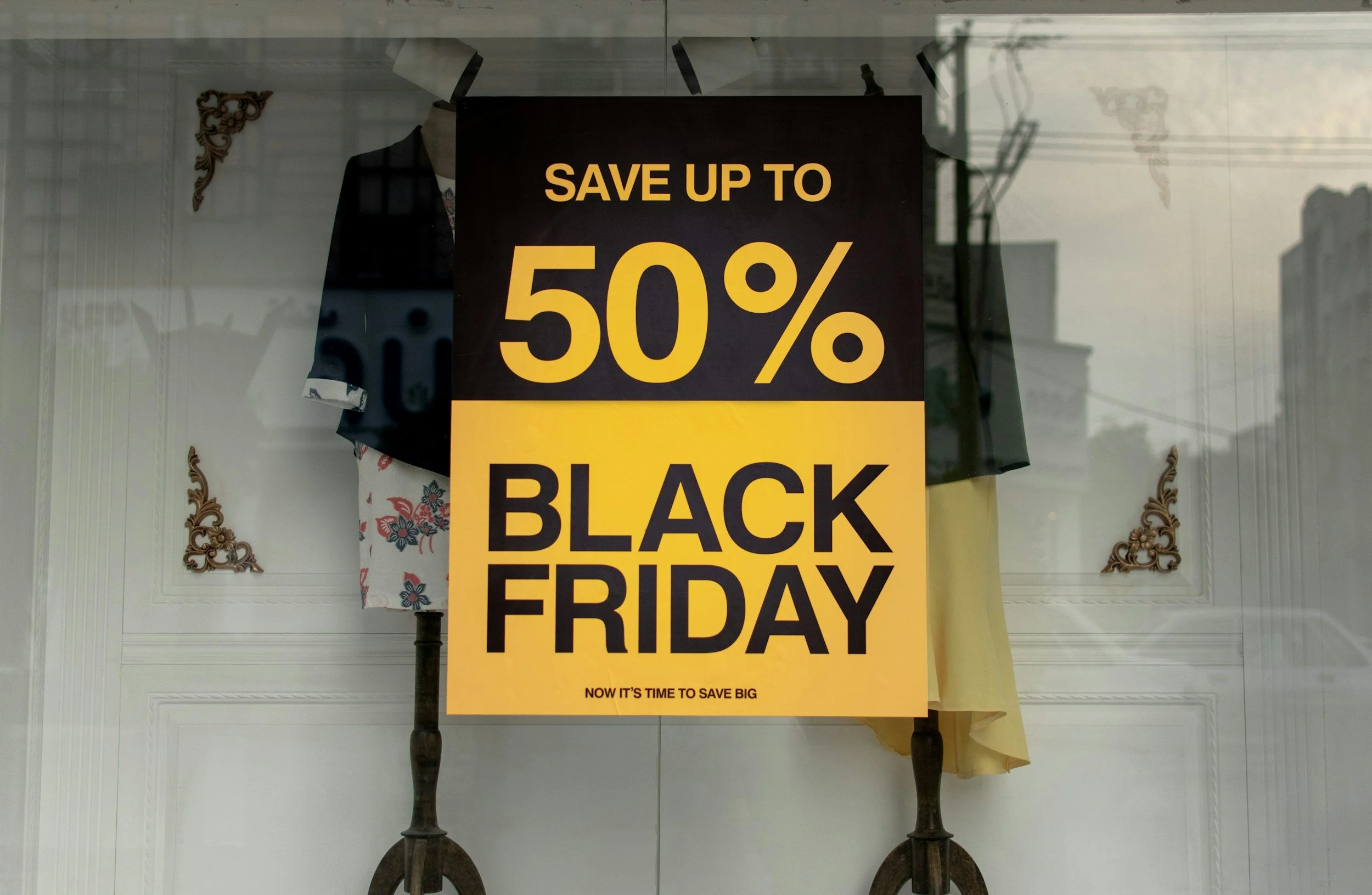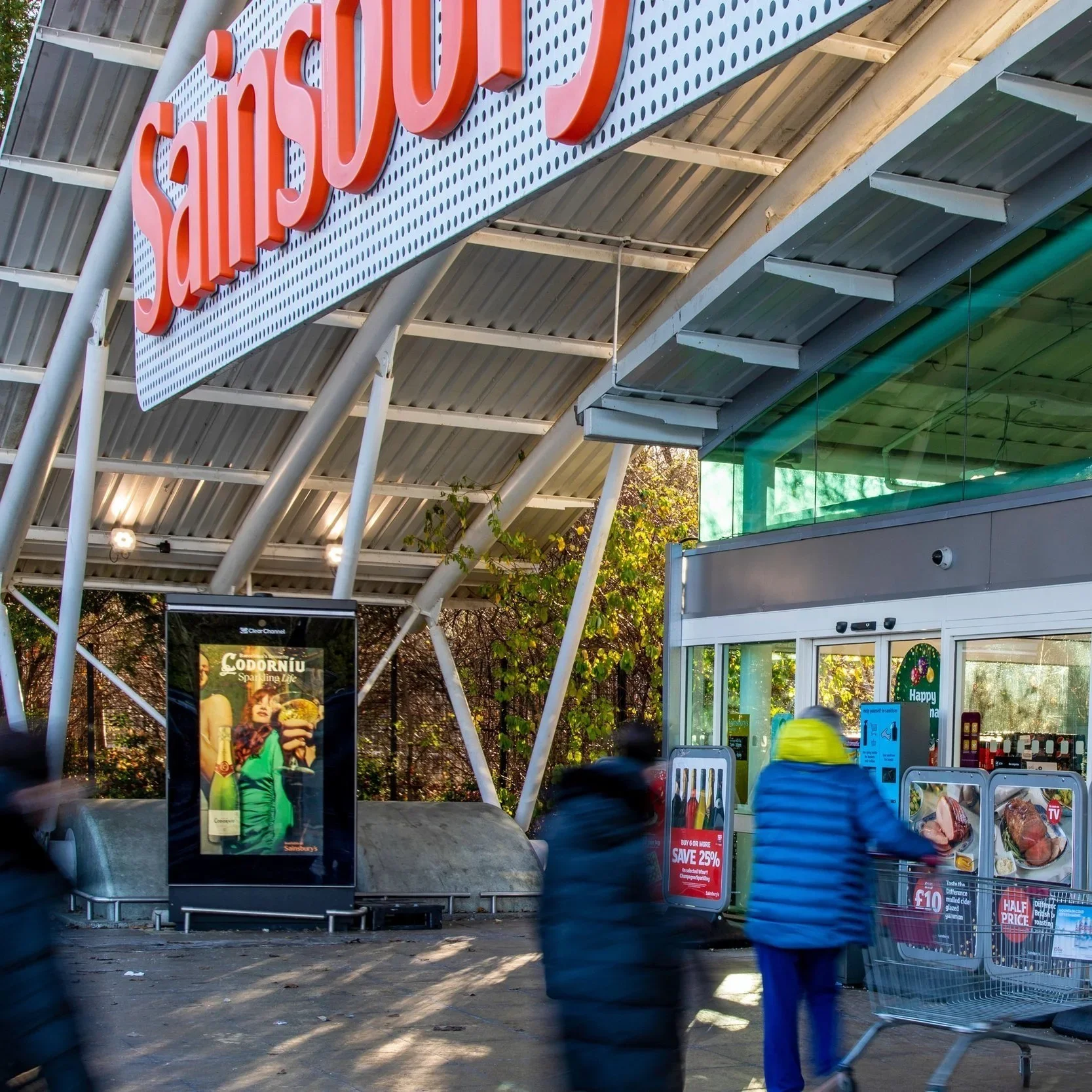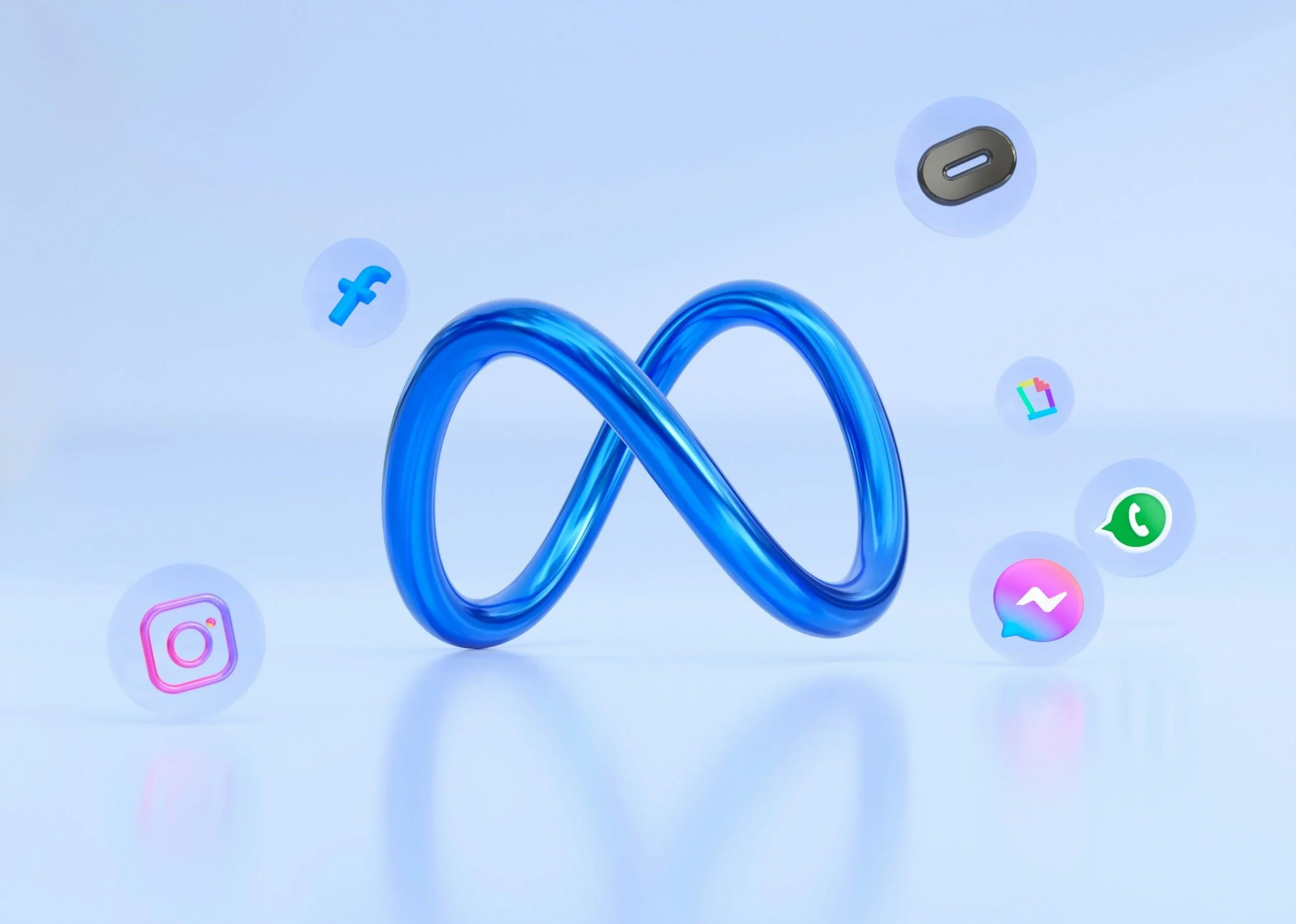7 Black Friday Strategies You Need To Know
Black Friday Strategies That Work
Key Takeaways
Black Friday is about more than discounts – while bold offers still drive volume, creative twists such as declining discounts, hidden gifts, or exclusivity can build urgency and long-term loyalty.
Campaigns should balance short-term sales with future value – tactics like free gifts, minimum spend thresholds, and retention-focused email flows help increase average order value and nurture repeat custom.
Values-driven approaches stand out – Green Friday initiatives can strengthen brand identity, generate PR, and resonate with conscious consumers who reject mass consumption.
Black Friday has become one of the most significant shopping events of the year, stretching well beyond a single day into Cyber Monday and the wider festive season. For brands, it represents a golden opportunity to capture attention, drive sales, and expand customer databases.
But in such a competitive space, simply slashing prices isn’t enough. Shoppers are savvy, expectations are high, and standing out requires both creativity and strategy.
We’ve rounded up seven effective Black Friday marketing strategies to help you build hype, increase traffic, raise average order values, acquire new customers, and nurture long-term loyalty.
1. Discounts & Offers
The classic Black Friday strategy is still one of the most effective: offer bold discounts that appeal to both warm and cold audiences.
For brands, this influx of customers is not just about quick wins – it’s also a chance to focus on retention. Acquiring large numbers of first-time buyers provides a pool of new customers who can be nurtured with email campaigns, loyalty schemes, and personalised offers long after Black Friday is over.
Discounts can also be used strategically to clear excess stock or push specific product categories. The key risk, however, is conditioning buyers to expect heavy discounts, which could reduce full-price sales at other times of year.
2. Declining Discounts
A smart twist on the traditional approach is the declining discount model. Here, offers start strong in the morning and gradually reduce throughout the day.
This creates urgency and encourages customers to shop earlier rather than later, giving you the advantage in crowded markets such as fast fashion or consumer electronics. By locking in spend quickly, you reduce the likelihood that shoppers will go elsewhere.
The key to success is clear communication: make sure customers understand that waiting will cost them more.
3. Hidden Free Products
Adding an element of surprise can make your campaign memorable. One option is to hide free products across your site, encouraging shoppers to browse multiple pages in the hope of finding them.
The benefits are clear: increased time on site, higher page views, and buzz on social media as users share their finds.
The downside is that some may simply check out with the free item, resulting in low order values. To counter this, hidden product campaigns work best when combined with other offers that push more meaningful purchases.
4. Early Access & Exclusive Sales
Rewarding loyal customers with early access or exclusive discounts is a powerful way to build long-term relationships. Giving your VIP customers a head start not only shows appreciation but also encourages repeat purchases.
Pairing exclusivity with “while stocks last” messaging adds urgency, ensuring these shoppers act quickly. For many retailers, early access campaigns also provide a way to soft launch Black Friday offers, ironing out issues before going live to wider audiences.
5. Free Gift With Purchase
Everyone loves a freebie. Offering a gift with purchase is an effective way to incentivise action and increase basket size.
Free gifts also generate goodwill, encouraging repeat custom beyond Black Friday. For brands with excess or lower-value stock, it’s a smart way to repurpose products without resorting to heavy discounting.
The caveat is that the free item must feel relevant and desirable – if it doesn’t add perceived value, it risks being overlooked.
6. Minimum Spend for Discount
Setting a minimum spend threshold (e.g. “Spend £100, get 20% off”) is one of the most effective ways to increase average order value (AOV). Customers often add more to their basket to qualify, raising your total revenue.
The trade-off is that some customers may purchase items they don’t truly want, leading to higher return rates post-sale. Carefully chosen thresholds – high enough to increase AOV, but not so high that they deter purchases – are crucial.
7. Green Friday
Not every brand wants to be associated with mass consumerism. For some, “Green Friday” is an alternative strategy that puts values before volume.
Examples include donating a percentage of sales to charity, planting a tree for every order, or tying promotions to sustainable practices. In 2020, for instance, Bedfolk pledged to plant a tree for every order over £99 with the message “Growing Trees, Not Discounts”.
Some brands go even further, closing their online store entirely as a statement against overconsumption. While this won’t generate immediate revenue, it can result in earned media coverage and brand awareness, particularly for businesses with strong ethical positioning.
Final Thoughts
The best Black Friday strategy depends on your brand’s goals, values, and target audience. For some, the focus will be acquiring new customers. For others, it will be rewarding loyal ones, shifting excess stock, increasing revenue, or strengthening brand identity.
What’s certain is that Black Friday is too important to ignore. Whether you take the traditional approach with discounts or a disruptive stance with Green Friday, your strategy should be deliberate, aligned with your brand, and designed to create impact not just for one weekend, but well into the future.
5. Free Gift With Purchase
Freebies are always appreciated. By including a free gift with a purchase, you can incentivise your customers to take action. Additionally, they facilitate a feeling of goodwill that can encourage repeat business.
This can be a great opportunity to get rid of excess or low-value stock however, the gift will need to be something your customers will actually want, or it may get lost in the noise.
6. Minimum Spend For Discount
Introducing a minimum spend threshold will increase your AOV as people add more products to be eligible for a discount on their orders.
The downside to this may be an increase in returned orders, as people add products they don’t want, just to get a discount on the product they did want.
7. Green Friday
For some companies, Black Friday is an opportunity to push their brand values and connect with their customers. With the period being associated with mass consumerism, throw-away culture, and deals that really are too good to be true, it might not fit with your brand image to join in on the buzz.
You could dedicate a percentage of revenue to a relevant charity, or tie in sustainability with your offer. For example, Bedfolk in 2020 committed to planting a tree for every order that was placed over £99 stating that they believe in “Growing Trees, Not Discounts”.
If you really want to take a stand, you can shut down your website and abstain from the day entirely. You won’t get an uplift in sales, but you might get some articles and posts that boost your brand awareness.
Conclusion
The best strategy for your brand depends on your own goals and values. Make your Black Friday strategy work for you, whether that’s finding new customers, rewarding existing ones, shifting excess stock, increasing revenue, or building your brand.
Black Friday is a key buying period and therefore an opportunity that shouldn’t be overlooked by any brand, big or small.
To learn more about Black Friday Strategies, get in contact today.












